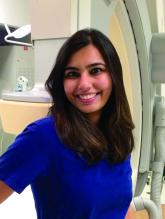News

Therapeutic Drug Monitoring in Rheumatology: A Promising Outlook But Many Barriers to Overcome
- Author:
- Richard Mark Kirkner
Tracking patient response to DMARD therapy has the potential to improve remission, but multiple barriers must be overcome before it’s widely...
News

Prediction, Management of Sjögren-Related Lymphomas Gain Ground With New Studies
- Author:
- Richard Mark Kirkner
Two European studies reported on a potentially strong predictive biomarker for marginal lymphoma in Sjögren disease and the effectiveness of...
News

Experts Highlight Challenges That Remain for AI Devices in Triaging Skin Cancer
- Author:
- Richard Mark Kirkner
Before AI makes significant inroads in dermatology, clinicians need to see more verifiable data, according to dermatologist Dr. R...
News
Twice-Yearly PrEP Gives ‘Huge’ 100% Protection
- Author:
- Richard Mark Kirkner
Twice-yearly injections are 100% effective in preventing new infections, according to the final results from the ...
News

How Dermatologists Can Safeguard Against Malpractice Claims
- Author:
- Richard Mark Kirkner
Dermatologists can protect themselves by understanding malpractice trends and taking preventive steps, such as using a rigorous informed consent...
News
Mediterranean Diet Lowers Tachyarrhythmia in Paroxysmal AF
- Author:
- Richard Mark Kirkner
While diet was not as meaningful for persistent AF, Mediterranean diet lessened risk for tachyarrhythmia post-AF ablation.
News
Anticoagulation Shows No Benefit in Preventing Second Stroke
- Author:
- Richard Mark Kirkner
Oral anticoagulation with edoxaban did not reduce risk for a second stroke and the risk for major bleeding was more than quadruple the risk with...
News
Why Are We Undertreating So Many Pulmonary Embolisms?
- Author:
- Richard Mark Kirkner
Based on deidentified data, less than half of one percent of patients who experience a PE receive advanced therapy.
News
Study of AI for Retina Disease Finds Many Unusable Images
- Author:
- Richard Mark Kirkner
“AI-assisted diabetic retinopathy screenings were more successful when completed in the ophthalmology clinic setting compared to the...
News

Vigilance Needed in Gout Treatment to Reduce CVD Risks
- Author:
- Richard Mark Kirkner
Growing evidence suggests that a guideline-directed, treat-to-target strategy in patients with gout not only controls the disease but also reduces...
News

Don’t Leave CVD Risk in RA Undertreated Despite Unresolved Questions
- Author:
- Richard Mark Kirkner
Disease-modifying antirheumatic drugs can reduce some cardiovascular risk in patients with rheumatoid arthritis, but questions remain whether that...
News

Why Incorporating Obstetric History Matters for CVD Risk Management in Autoimmune Diseases
- Author:
- Richard Mark Kirkner
A history of pregnancy complications can put women with autoimmune disease at a higher risk for CVD. Prophylaxis during pregnancy may avoid those...
News

Satisfactory Results, Less Pain When Surface Anesthesia Used with Thermomechanical Fractional Injury Therapy
- Author:
- Richard Mark Kirkner
“This is a relatively new device, which uses an approach to help texture changes in wrinkling on the skin in a different fashion than any of the...
News

Neutrophils Take Center Stage in Growing Understanding of Colchicine’s Role in Treating Atherosclerotic Cardiovascular Disease
- Author:
- Richard Mark Kirkner
Colchicine, a legacy drug that received a new indication in 2023 for cardiovascular disease, can treat arterial inflammation after a heart attack...
News

Study Demonstrates Faster Recovery, Less Pain After Facial Resurfacing With 2910-nm Laser
- Author:
- Richard Mark Kirkner
The study enrolled 15 patients who had three treatment sessions with the 2910-nm laser.
